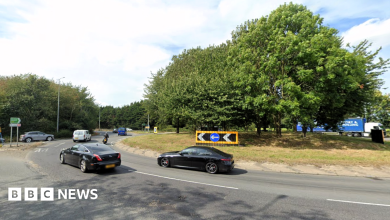Norwich Thickthorn and A47 roadworks cause traffic ‘nightmare’

Traffic Disruptions at Thickthorn Junction Impacting Public Transport and Haulage Businesses
The ongoing construction work at Thickthorn junction has created significant challenges for both public transportation services and haulage companies operating in the Norwich area. These infrastructure improvements, while necessary for long-term benefits, are causing immediate disruptions that threaten sustainable travel options and business operations in the region.
Peter Nathanail, managing director of Transport Made Simple, which operates Konectbus in the county, has reported alarming statistics about the impact on their services. Last week, approximately 40% of the company’s Dereham to Norwich routes experienced delays directly attributable to the Thickthorn construction work. This level of disruption affects thousands of passengers who rely on this vital transportation link daily. While Nathanail acknowledges the importance of improving the junction for future benefits, he expresses serious concern about the immediate consequences. His primary worry is that if bus services continue to be unreliable, passengers will abandon public transportation in favor of less sustainable travel methods—potentially for good—which would undermine broader environmental and traffic management goals for the region.
The construction’s impact extends beyond public transportation to the haulage industry as well. Oliver Medler, director at J Medler Haulage based in Taverham, shares similar concerns about the scale and timing of the roadworks. While recognizing that Thickthorn junction desperately needs “serious upgrades,” Medler believes the approach to the construction schedule is flawed. Drawing on his 18 years of industry experience, he argues that the current strategy of undertaking multiple major projects simultaneously is unprecedented and problematic. He suggests that concentrating on one significant project at a time would help minimize the widespread disruption currently affecting the area’s transportation network.
For haulage companies like Medler’s, the consequences of these delays extend far beyond simple inconvenience. The unpredictable traffic conditions create complex challenges for daily operational planning, particularly regarding drivers’ hours—which are strictly regulated for safety reasons. This unpredictability makes it extremely difficult to manage schedules efficiently, leading to potential compliance issues, increased stress for drivers and planners, and difficulties meeting customer delivery expectations. These operational challenges highlight how infrastructure projects can have cascading effects throughout the local economy, affecting businesses that rely on predictable transportation networks.
The financial implications for haulage businesses are particularly concerning. Medler points out that these delays will “definitely make a difference to the bottom line” of his company, yet competitive market pressures prevent him from adjusting prices to compensate for the increased operational costs. He cannot simply charge more for jobs affected by roadworks, as this would likely result in losing business to competitors who might absorb the costs or find alternative routes. This places haulage companies in a difficult position—bearing increased costs that cannot be passed on to customers, effectively reducing their profit margins during the construction period.
This situation at Thickthorn junction illustrates the delicate balance authorities must strike when implementing infrastructure improvements. While the long-term benefits of enhanced junctions may include reduced congestion, improved safety, and better traffic flow, the short-term disruptions can have serious consequences for both public transportation adoption and local business operations. The experiences of Konectbus and J Medler Haulage suggest that more consideration might be needed for how construction projects are scheduled and coordinated, with greater attention to minimizing impacts on critical transportation services and the businesses that depend on reliable road networks. Without such planning, ironically, infrastructure projects designed to improve transportation may temporarily undermine the very systems they aim to enhance.








